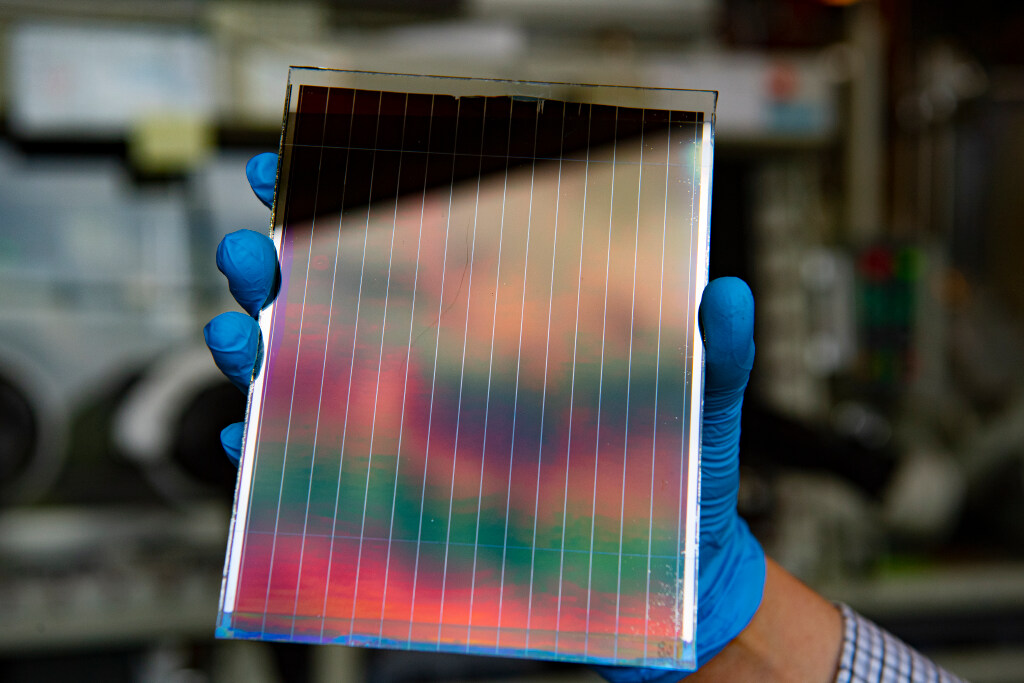Perovskite Solar Cells: A Breakthrough in Affordable Renewable Energy

A great avenue in renewable energy was opened with the invention of Perovskite Solar Cells (PSCs) in 2009. Developed by Japanese researcher Tsutomu Miyasaka, PSCs initially had an efficiency of just 3.8%. However, efficiency soon soared to nearly 25%, rivaling the silicon-based photovoltaic cells (PVC) that dominate today’s industry. The unique features of PSCs, combined with the efficiency of silicon cells, hint at applications beyond conventional solar technology.
The Mechanism of PSCs
Perovskite solar cells are named after the mineral perovskite (CaTiO3), not because it is a component but because the materials used share its crystal structure, enabling energy conversion from light photons to electrical energy.
When light strikes the PSC, it excites electrons, forming electron-hole pairs. The electrons move toward the electrode, while the holes move in the opposite direction, generating an electrical current.
Advantages of PSCs
Unlike silicon-based cells, PSCs absorb a broader range of the electromagnetic spectrum, promising even higher efficiencies in the future. Additionally, perovskites are cost-effective as they can be synthesized through simple, inexpensive methods, making them a more affordable option compared to silicon solar cells.
Applications
Wearable Solar Technology
With the flexibility of perovskites, wearable technology becomes feasible. In the future, you may charge your phone simply by walking in the sun, thanks to solar-charged clothing and accessories.
Building-Integrated Photovoltaics
Perovskite solar cells can be made transparent, enabling integration into windows, building facades, and car sunroofs. This would allow buildings to generate electricity seamlessly, while maintaining aesthetic appeal—solar cars, for example, could look as sleek as traditional vehicles.
Portable Power Sources
The lightweight and flexibility of PSCs make them ideal for portable devices and off-grid power, such as drones, remote sensors, and charging stations in remote locations. This could lead to significant cost savings for transporting millions of portable power units.
Challenges and Future Outlook
Despite their many benefits, PSCs face several challenges. The main issue is stability—PSCs are sensitive to moisture, oxygen, and UV light, which causes degradation and shortens their lifespan. Researchers are developing protective coatings and improved designs to address this issue.
Additionally, many perovskite materials contain lead, raising environmental and health concerns. Efforts are underway to create lead-free perovskites that maintain high efficiency without toxicity.
Looking ahead, PSCs are likely to play a crucial role in renewable energy. Their use in tandem solar panels—where PSCs and silicon cells work together to capture more sunlight—could further increase efficiency. As research progresses and stability issues are resolved, PSCs could become a cost-effective, high-performance solution for large-scale clean energy production.
Conclusion
Perovskite solar cells represent a major breakthrough in solar technology. Their combination of high efficiency, low cost, and versatility make them a game-changer in the renewable energy sector. With ongoing research and innovation, PSCs may significantly accelerate the global shift towards sustainable energy solutions.
Similar Post You May Like
-

CFCs, HFCs and their long, troubled history
At its peak, the ozone hole covered an area 7 times larger than the size of Europe, around 29.9 million km2, and was rapidly expanding
-

The Origin of Universe: Deciding point where it all began!
Let us unravel and surf through the ideas throughout ages to understand what the universe and its origin itself was to its inhabitants across history.
-

The Artemis Program
Inspired by the Greek goddess of the Moon, twin sister to Apollo, the artimis program was named on 14 May 2019 by Jim Bridenstine.






